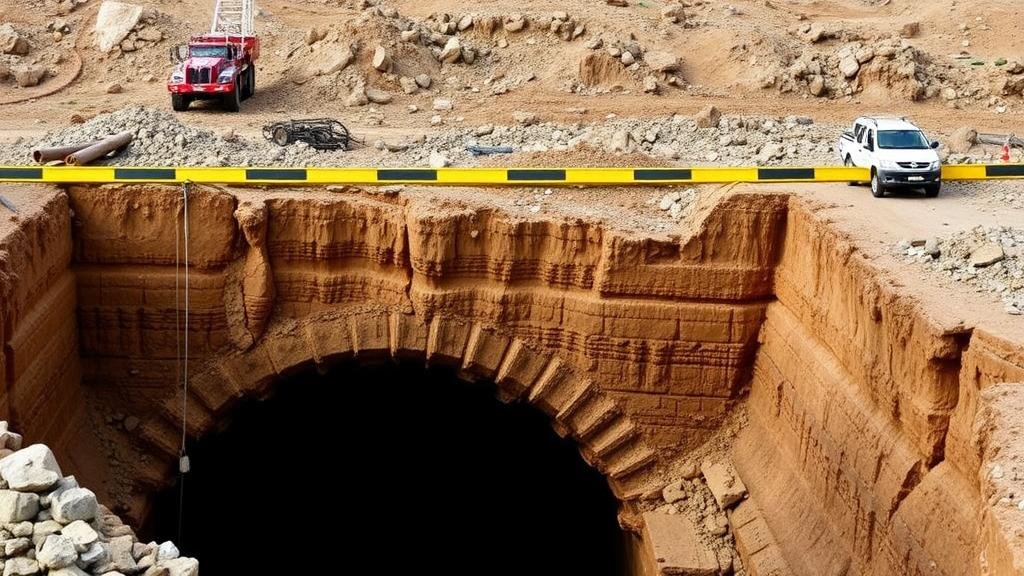How to Widen Underground Drifts While Maintaining Structural Safety
How to Widen Underground Drifts While Maintaining Structural Safety
Widening underground drifts is a common practice in mining and construction that enhances access to ore bodies, facilitates equipment movement, and supports operational efficiency. But, this undertaking must be balanced with the utmost consideration for structural integrity and safety. This article delves into the methods and best practices for successfully widening underground drifts while ensuring the surrounding geological environment remains stable.
Understanding Underground Drifts
Underground drifts are horizontal passages in a mine or tunnel that provide access to various resources or infrastructure. are typically constructed to promote efficient material transport and personnel movement. Their stability is critical, as compromised structures can lead to collapses, risking both lives and resources.
Assessing Geological Conditions
Before initiating any widening procedure, a thorough geological survey is paramount. This assessment includes:
- Analyzing rock properties
- Identifying fault lines and fractures
- Evaluating groundwater levels
Utilizing techniques such as geophysical surveys and drilling core samples can provide insights into the ground conditions. For example, a case study in the Gold Fields of Western Australia demonstrated that by using advanced geological modeling software, engineers could predict subsurface behavior accurately, thus preventing potential ground failures.
Designing a Safe Widening Plan
Widening a drift requires a well-planned approach to maintain structural integrity. Several design methods can be implemented:
- Sequential Excavation Method (SEM): This involves removing materials in phases, allowing for the installation of supports as the work progresses. For example, the London Underground expansion project utilized SEM to widen existing tunnels effectively while preserving the overall structure.
- Steel and Shotcrete Reinforcement: Applying steel beams and shotcrete can enhance the walls capacity to support additional loads. This methodology was instrumental in the Colorado School of Mines research project, yielding positive results in minimizing cave-ins during drift widening.
Useing Effective Support Systems
As excavation advances, it is critical to incorporate support systems to stabilize the newly exposed walls. Common support mechanisms include:
- Rock Bolts: Helical rock bolts can effectively anchor unstable rock masses, providing resistance against lateral pressures.
- Mesh and Dowels: Installing wire mesh combined with dowels can support weak rock formations and prevent rockfalls during widening.
A specific example can be found in the Penn State Universitys research, which emphasizes rock bolt effectiveness in increasing drift safety during widening operations.
Monitoring and Maintenance
Ongoing monitoring is essential for ensuring the stability of newly widened drifts. Key monitoring strategies include:
- Regular geotechnical assessments
- Installation of strain gauges and displacement sensors
A notable case involved a mining company in Canada that implemented real-time monitoring technologies. By using sensors to track movement, the engineering team was alerted to potential hazards, allowing timely interventions that ensured worker safety and structural integrity.
Conclusion
Widening underground drifts presents numerous challenges, particularly regarding structural safety. By conducting detailed geological assessments, developing thorough design plans, employing effective support systems, and maintaining vigilant monitoring practices, it is possible to successfully widen drifts while preserving safety and integrity. These methods have not only been proven effective in various case studies but are also essential to advancing best practices in the industry.
To wrap up, professionals in mining and construction must prioritize safety through diligent planning and execution. Emphasizing preventive measures and continuous assessment will foster a safer working environment while enabling operational efficiency in widened underground drifts.



